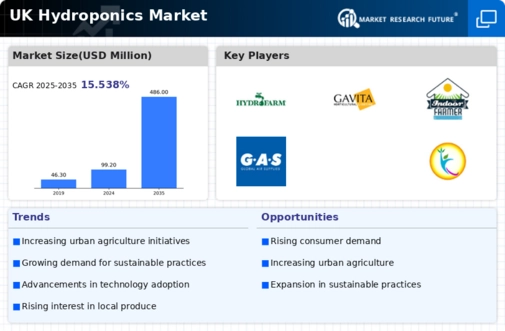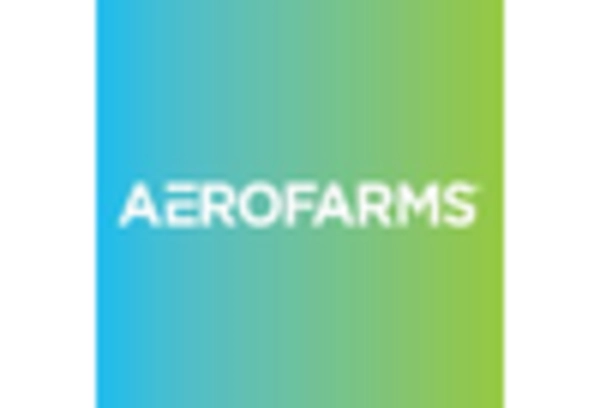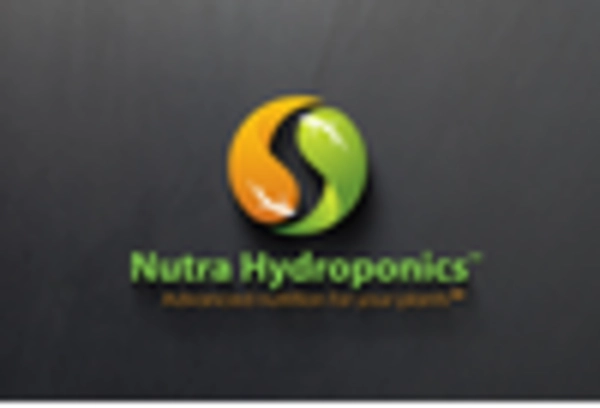Rising Demand for Fresh Produce
The hydroponics market in the UK is experiencing a notable increase in demand for fresh produce, driven by consumer preferences for locally sourced and organic food. This trend is reflected in the growing number of hydroponic farms, which are capable of producing high-quality vegetables and herbs year-round. According to recent data, the UK hydroponics market is projected to grow at a CAGR of approximately 10% over the next five years. This demand is further fueled by the increasing awareness of the health benefits associated with fresh produce, leading to a shift in consumer purchasing habits. As a result, hydroponic systems are becoming more prevalent in urban areas, where space is limited, yet the need for fresh food is critical. The hydroponics market is thus positioned to capitalize on this rising demand, offering innovative solutions to meet consumer needs.
Government Support and Incentives
The UK government has been actively promoting sustainable agricultural practices, which includes support for the hydroponics market. Various initiatives and funding programs are in place to encourage the adoption of hydroponic systems among farmers and entrepreneurs. For instance, grants and subsidies are available for those investing in modern agricultural technologies, including hydroponics. This governmental backing not only enhances the financial viability of hydroponic ventures but also aligns with the UK's broader environmental goals. The hydroponics market stands to benefit significantly from these incentives, as they lower the barriers to entry for new players and stimulate innovation within the sector. As the government continues to prioritize food security and sustainability, the hydroponics market is likely to see increased investment and growth opportunities.
Urbanization and Space Constraints
The ongoing trend of urbanization in the UK is significantly impacting the hydroponics market. As cities expand and populations grow, the availability of arable land is diminishing, creating a pressing need for alternative farming solutions. Hydroponics offers a viable answer to this challenge, as it allows for food production in limited spaces, such as rooftops and indoor facilities. This adaptability is particularly appealing in urban environments where traditional agriculture is not feasible. The hydroponics market is thus well-positioned to thrive in urban settings, catering to the increasing demand for fresh produce in densely populated areas. The ability to grow food closer to consumers not only reduces transportation costs but also enhances the freshness of the produce, making hydroponics an attractive option for urban dwellers.
Technological Innovations in Hydroponics
Technological advancements are playing a crucial role in shaping the hydroponics market in the UK. Innovations such as automated nutrient delivery systems, advanced lighting solutions, and data analytics for crop monitoring are enhancing the efficiency and productivity of hydroponic farms. These technologies enable growers to optimize resource use, reduce waste, and improve crop yields. The integration of IoT devices and AI in hydroponics is also gaining traction, allowing for real-time monitoring and management of growing conditions. As these technologies become more accessible, they are likely to attract new entrants into the hydroponics market, further driving competition and growth. The potential for increased efficiency and reduced operational costs positions the hydroponics market as a viable alternative to traditional farming methods.
Environmental Concerns and Resource Efficiency
Growing environmental concerns are driving interest in the hydroponics market in the UK. As awareness of climate change and resource depletion increases, consumers and businesses alike are seeking more sustainable agricultural practices. Hydroponics, which uses significantly less water than traditional farming methods, presents a compelling solution. Studies indicate that hydroponic systems can reduce water usage by up to 90%, making them an attractive option for resource-conscious growers. Additionally, the reduced need for pesticides and fertilizers in hydroponics contributes to a lower environmental impact. The hydroponics market is thus gaining traction as a sustainable alternative, appealing to eco-conscious consumers and investors. This shift towards environmentally friendly practices is likely to bolster the growth of the hydroponics market in the coming years.

















Leave a Comment